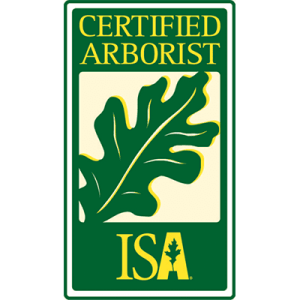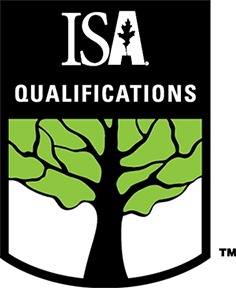Common Tree Diseases To Watch Out For In Your Seattle Trees
Written By: Eric Ledford
ISA Certified Arborist – PN-9290A
ISA Qualified Tree Risk Assessor (TRAQ)
How To Tell If Your Seattle Trees Are Infected And What To Do
The warm, wet Western Pacific coastal climate is the perfect breeding ground for fungi, bacteria, and viruses that decay wood, reduce growth, and destroy our Seattle trees.
But how can you tell if your trees are unhealthy?
As local tree care specialists, we have come to the aid of many Seattle area businesses and homeowners who have had trees fall and cause damage to their property and homes because, unbeknownst to them, their trees were suffering from a debilitating disease. We have also removed countless trees because the infection went unchecked for too long, and we could not save them.
We created this guide to the most common diseases that affect Seattle area trees and what to look for to help you identify unwell trees and get them the care they need before it’s too late.
If you see any of these symptoms (or others) in your trees, shrubs, or hedges, reach out immediately to a local tree care company with an arborist on staff. They can treat the illness and save your tree if caught soon enough. At the very least, they will help contain the spread and teach you how to protect your landscape from future infection and disease.
Most Common Tree Diseases Affecting Seattle Trees And How To Tell If Your Seattle Trees Are Affected
1. Swiss Needle Cast

Swiss Needle Cast infected coniferous tree. Photo Credit: Seattle Government
Fungus: Phaeocryptopus geaumannii
Host: Douglas-fir
Swiss Needle Cast is a common fungi disease that affects nearly all older Douglas Firs in Seattle, Washington, and the Pacific coast. Parallel rows of tiny brown-black spots on the underside of the needles can identify it.
Symptoms Of Swiss Needle Cast
Swiss Needle Cast causes the needles to
die and cast
or
shed prematurely. While it won’t kill your Douglas-firs, it
stunts growth and causes needle tip
dieback, which resembles the effects of drought, and
thin, yellow-brown discolored crowns.
How To Prevent Swiss Needle Cast
While you cannot cure infected needles, you can treat trees with a
fungicide to prevent their spread. To be effective,
you must spray the entire tree.
NOTE: Other types of needle diseases and fungi causing leaf blight require different treatments. A tree care specialist or arborist well-versed in the tree diseases affecting your region can identify the cause of your tree’s premature needle or leaf death and take the proper course of action to restore the health of your trees.
2. Dwarf Mistletoe

Dwarf mistletoe growing on a coniferous tree in Seattle, WA. Photo Credit: forestpathology,org
Cause: Seed-bearing parasitic plant; Arceuthobium
Host: Hemlock, Larch, Douglas-fir, True Fir, other native firs, and pine
Dwarf Mistletoe is the most damaging forest pathogen in Western North America. It is a seed-bearing parasite plant that lives on living Western Hemlock, Douglas-fir, Larch, and True Firs, and pine trees growing in Seattle and the Pacific coast that feeds off the cambium and sapwood of tree twigs, branches, and boles. They are host-specific and affect several coniferous tree species.
Over time,
Dwarf Mistletoe produces densely branched structures called
witches brooms
that
deprive the host tree of water and nutrients and become home to wildlife and other pests.
Symptoms Of A Dwarf Mistletoe Infection
Severe Dwarf Mistletoe infections lead to growth loss, top kill, and tree death.
Aerial shoots growing on the branches of your coniferous trees are tell-tale signs of an attack.
Dwarf Mistletoe disrupts the growth regulators causing abnormally fast growth in the infected tissues of the tree, resulting in visible branch and twig swellings that look like cankers
and grow more significant over time. Because its seeds explode, this parasitic plant
spreads far and fast, so
aggressive treatment is necessary.
If you see signs of this parasitic plant growing on your trees, have a local arborist inspect and treat it right away.
How To Prevent Dwarf Mistletoe Disease
Due to the airborne and explosive nature of seeding,
Dwarf Mistletoe is impossible to prevent. By the time you see plant growth, the mistletoe has been infecting your tree for at least
2 years.
However, a reputable Seattle tree service providing
regular tree maintenance will be able to identify early signs and take action to keep this parasitic plant from growing and spreading.
3. Annosus Root And Butt Rot

Annosus fungal conk growing on the base of a pine tree. Photo Credit: Natural Resources Canada
Cause: Heterobasidion occidentale Heterobasidion parviporum (Heterobasidion annosum)
Host: Abies, Junipers, Cedars, Cypress, Hemlock, Pines, Firs, Sequoia
Annosus Root Disease infects all western coniferous tree species in Seattle, the Pacific Northwest. The infection begins when fungal spores attach to fresh stumps in August and spread into the stump roots. The fungus then
spreads to living trees
through contact between the dead tree roots and the healthy tree roots.
In addition, the
flowering conks
seed and spread the fungal spores to nearby trees.
Annosus Root Disease causes the roots and butt of the
tree to rot
and die over time. It also leaves infected trees vulnerable to fatal
bark beetle infestation and
windthrow.
Symptoms Of Annosus Disease
Infected trees may have
thin, chlorotic (yellowing due to lack of chlorophyll)
foliage, fading crowns, decreased height and lateral branch growth.
Small,
buff-colored pustules or leathery buff-colored
conks with a smooth cream-colored underside grow on the outer bark at the root collar of dead and dying trees. They start very tiny and grow up to 10 inches or larger.
Ways To Prevent Annosus Root Disease
Treating fresh tree stumps with fungicide
can prevent the initial Annosus spore infection.
Talk to a local nursery or tree service for advice before applying. Many fungi cause root disease and have similar symptoms to Annosus Disease. You want to ensure you treat your stump and protect your healthy trees with the correct methods.
Avoid
damaging the roots or stems of your trees through soil compaction, construction, mowing over the root zone, and severing roots.
Select trees resistant to Annosus
if you live in a region with an identified infection.
Have a tree care company near you provide
annual tree pruning services. They will inspect your trees and identify and treat any health issues before they cause irreparable damage.
While these are some of the most common diseases affecting our Seattle area trees, this is in no way comprehensive. Many visible symptoms can be signs of other infections we have not addressed. Other symptoms you may see on your trees or go unseen until it’s too late.
Regular inspections and tree care conducted by a local arborist or certified tree care company will help you prevent some diseases, enable you to
identify early signs that your trees are unhealthy and be proactive in the treatment to help your trees thrive.
Sound Tree Care is a top-rated, licensed tree care company with a certified arborist on staff serving SeaTac, Seattle, and the surrounding communities. Our tree care specialists can help you keep your trees healthy and strong with regular tree pruning, preventative maintenance, and disease treatment services. Talk to us about your trees today!
Additional Resources On Common Seattle Tree Diseases
Washington DNR Insects and Disease Monitoring
Conifer Diseases in Washington: Identification, Management and Weather Influences






